
Snakes have been a source of fear for most people, from the way they move, look, and how most of them carry venom that can lead to serious injuries, or worst, death. A bite from a venomous snake usually happens when the snake feels threatened or agitated. It is their defense mechanism, and sometimes, they give us warning signs before striking. The interaction between snakes and humans have been too frequent, which is possibly because of their loss of natural habitat, depleting food source, and human advancement. With all these in mind, you might want to ask, what is the most venomous snake in the world?
It is quite disheartening to know that snakes have been getting a lot of bad reputation from people wherein they only act on their own nature. They could be aggressive, timid, or shy, but if they feel the need to protect themselves, then they will surely use everything in their power to do that. Humans would naturally do the same, but snakes have been portrayed as evil, vile, and repulsive creatures for a long time, when unknowingly, their venom has been utilized in research to preserve lives against cancer and other life-threatening conditions. Now, let’s find more about these most venomous snakes with our list of facts below.
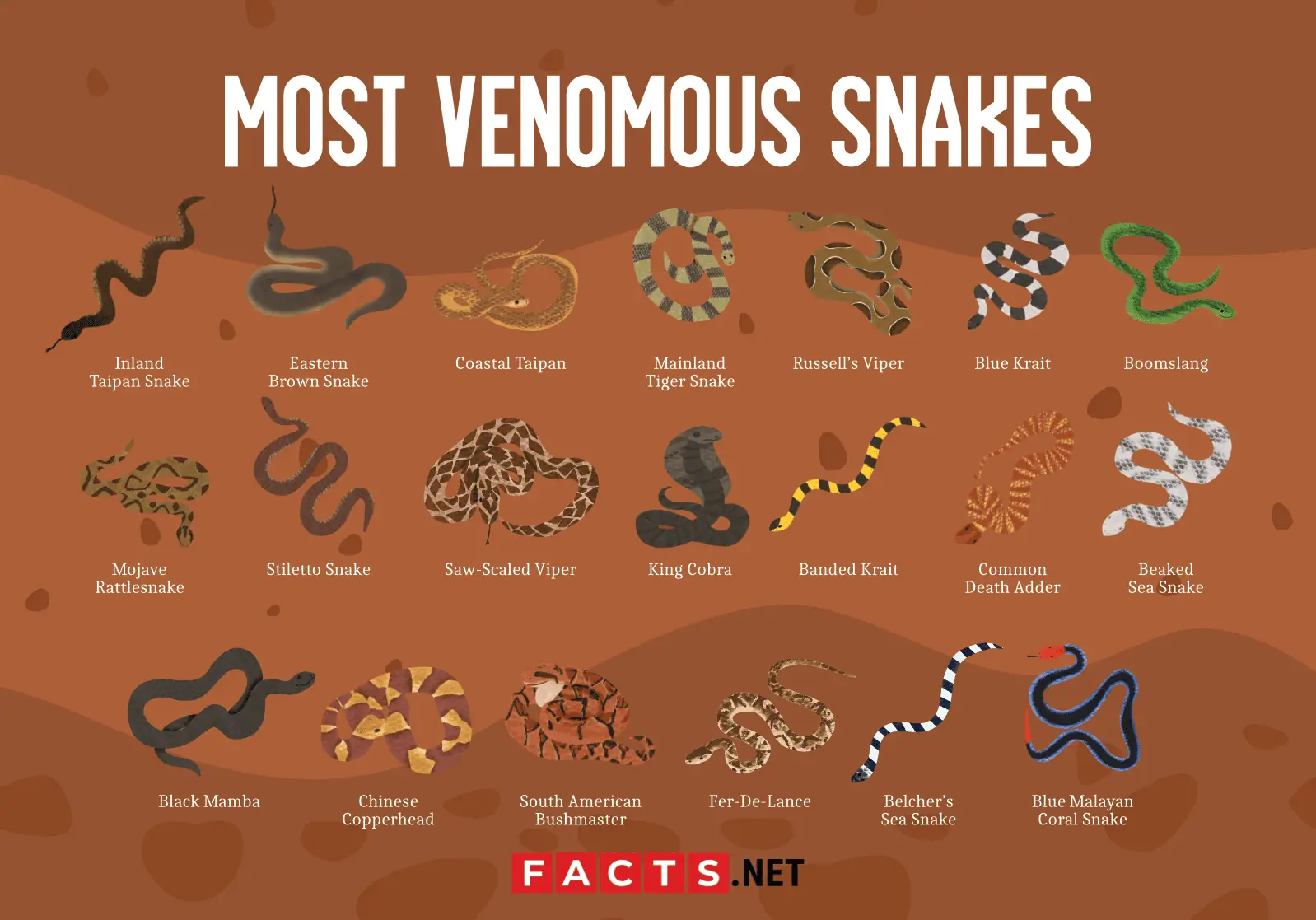
Inland Taipan Snake
Scientific name: Oxyuranus microlepidotus
Length: 2 – 2.7 meters
Location: Australia
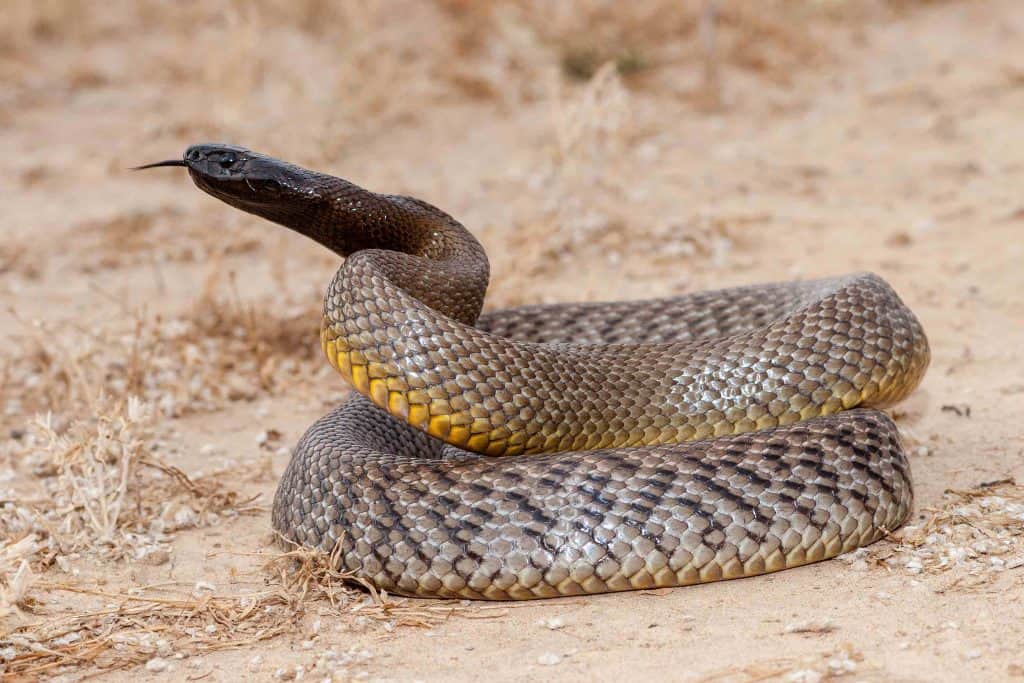
It is the most venomous amongst all the terrestrial and sea-dwelling snakes in the whole world, but unlike other snakes, they are usually shy and reclusive. A bite from this snake contains a very potent venom that can kill over 100 fully-grown men after more than 30 minutes. When bitten by this type of snake, the venom would typically cause neurotoxic, hemolytic, and coagulopathic reactions, like paralysis, or even death to humans.
The inland taipan snakes have a dark tan shade but they can change to a rich, dark hue or a brownish light-green, depending on seasons. They can also have a brown or green coloration on their back, sides, and tail. The darker coloration would enable the snake to provide heat while getting a smaller portion of the body outside its burrow. Moreover, these snakes live up to 10 to 15 years.
Eastern Brown Snake
Scientific name: Pseudonaja textilis
Length: 2 – 2.4 meters
Location: Eastern and Central Australia and Southern New Guinea
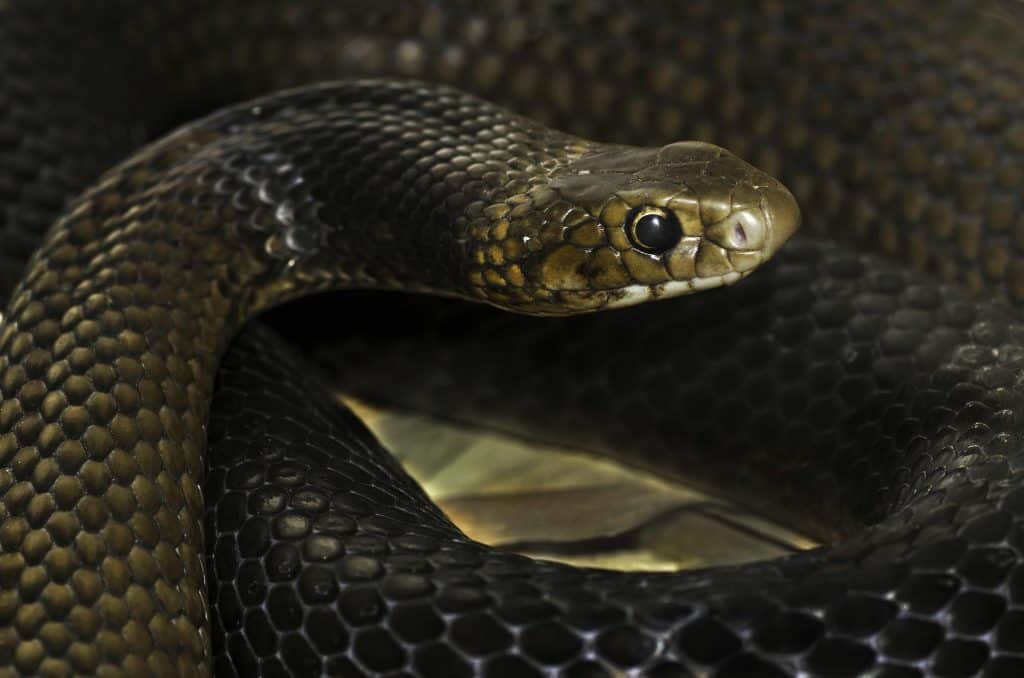
Ranked as the second most toxic terrestrial snake in the world, they are highly formidable and very aggressive in nature. There have been more or less 23 deaths associated with quick bites from Eastern Brown Snakes. These snakes come in various colors, ranging from uniform tan to grey or dark brown. They also have slender bodies and small heads, belonging to the cobra family. They are active during the day and usually hunt for rats and mice, smaller vertebrates, reptiles, and frogs.
People should not take lightly the presence of a full-sized adult Eastern Brown Snake. Their venom is specialized to kill warm-blooded animals. combined with their striking speed, they are truly formidable. Also, the death rate from snake bites in Australia is mostly caused by the Eastern Brown Snake. Despite the advancement of first-aid treatment and the creation of antivenom, there are now one to two reported deaths per year.
Coastal Taipan
Scientific name: Oxyuranus scutellatus
Length: 1.8 – 2.9 meters
Location: Australia
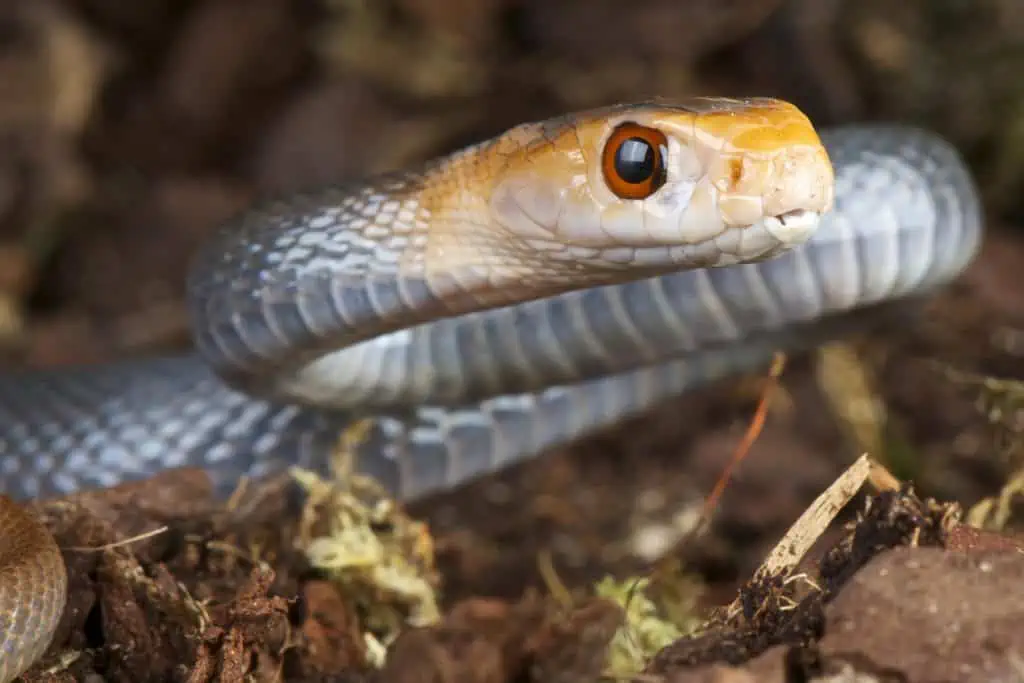
A bite from a Coastal Taipan can cause paralysis and breathing difficulties. According to Dr. Geoff Isbister, its venom can kill a person within 45 minutes. Without treatment, its mortality rate is a solid 100%. These snakes are typically aggressive in nature but would avoid human interaction as much as possible. Most Taipans are rodent eaters which helps control the population of rats and mice. Built with a very large body while carrying an extremely potent venom, these snakes should not be provoked for any reason.
Taipans usually undergo a change in coloration depending on the seasons. Their shade would be darker during winter and change to faded in the summer. Their eyes are large with deep orange-brown irises and rounded pupils. These snakes prefer to keep to themselves in places with a temperate climate, to tropical coastal regions where the food source is abundant. They also take shelter in abandoned animal burrows, logs, and vegetation.
Mainland Tiger Snake
Scientific name: Notechis scutatus
Length: 1.2 – 1.6 meters
Location: Australia
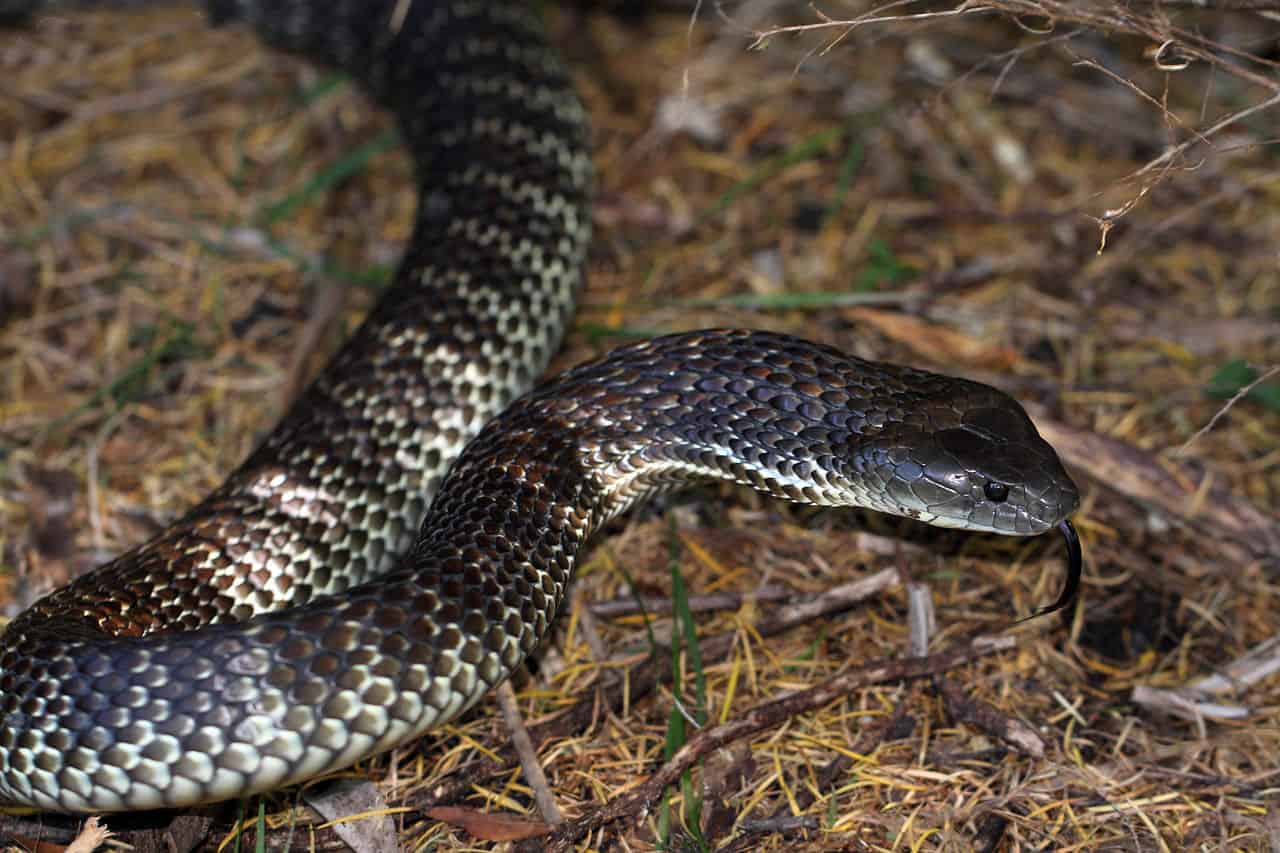
Although people would characterize this snake by its tiger-like stripes, there are other tiger snakes that don’t have any stripes at all. Moreover, they prefer to stay in places where people reside in Australia, making them responsible for fatalities in the country. However, the Eastern Brown Snake took its place recently for that matter. Despite that, people should still be cautious if they spot one because they are up for confrontation anytime, and once they do, they would act like a cobra, lifting their head and neck when threatened.
This snake can move through water with ease and possesses fangs that measure 3.5 to 5 mm in length. Moreover, people have observed that their head is slightly wider and distinct from their necks, and their color ranges from grey-brown to black. However, their color is not their only form of identification since they come in a lot of variations.
Russell’s Viper
Scientific name: Daboia russelii
Length: 1.5 meters
Location: India, Taiwan, and Java
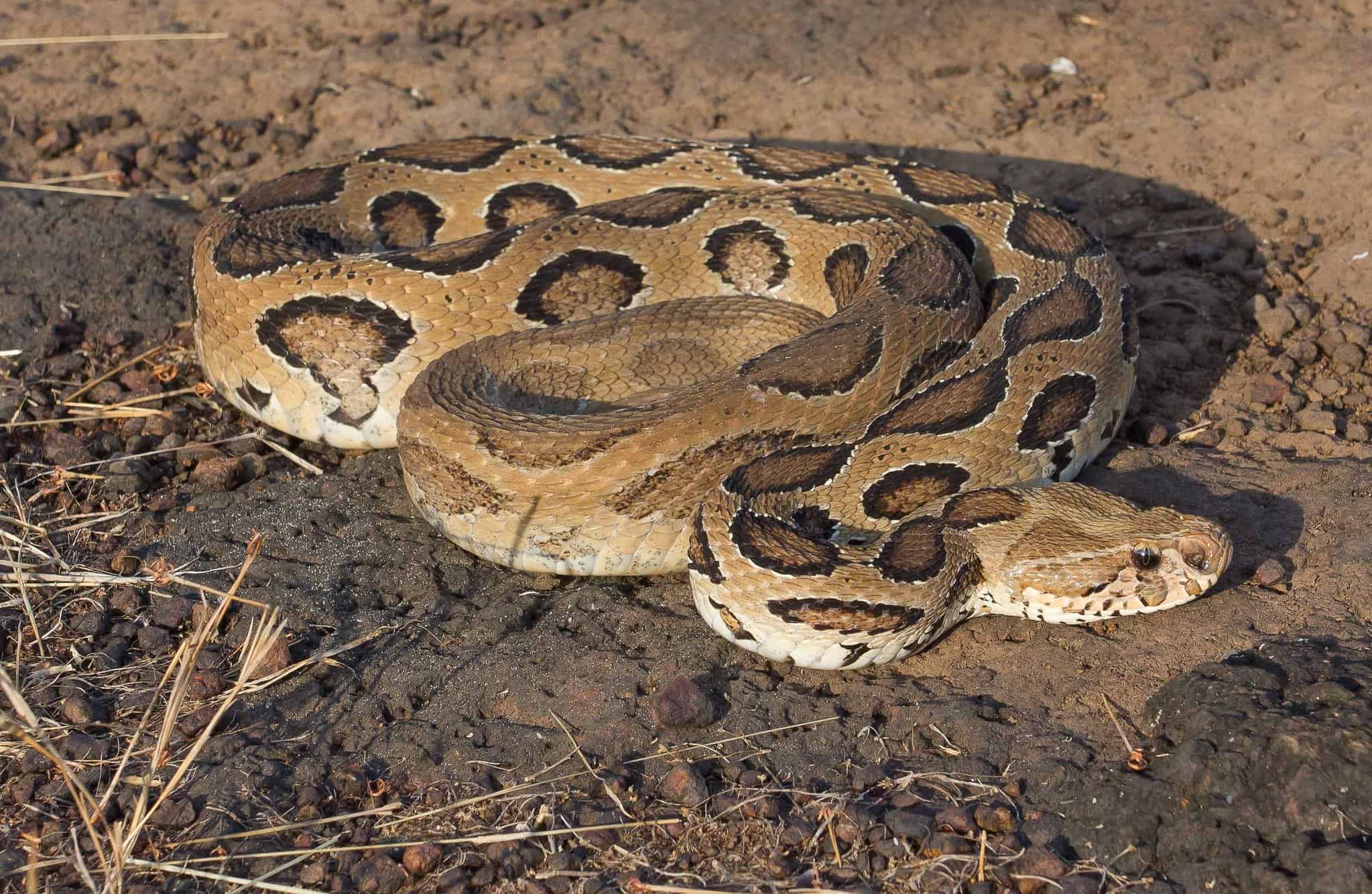
Because of its highly distributed population and aggressiveness, the Russell’s Viper has been the main cause of snake bites and deaths among all venomous snakes. In addition, these vipers are usually frequent in highly-populated areas. They tend to freeze rather than fleeing in most encounters, so a defensive or offensive bite would be their last resort. It is highly irritable, thus having a record of biting more humans than king cobras in India.
This species of viper is one of the big four venomous snakes in India. They are the Common Krait, Russell’s Viper, Indian Saw-Scaled Viper, and Indian Cobra. Named after a Scottish naturalist, Patrick Russell, this snake is responsible for 50% of snakebite-related deaths in India. This is because they mostly lurk in grasslands, plains, and farmlands.
Blue Krait
Scientific name: Bungarus candidus
Length: 1.6 meters
Location: Thailand and Southeast Asia
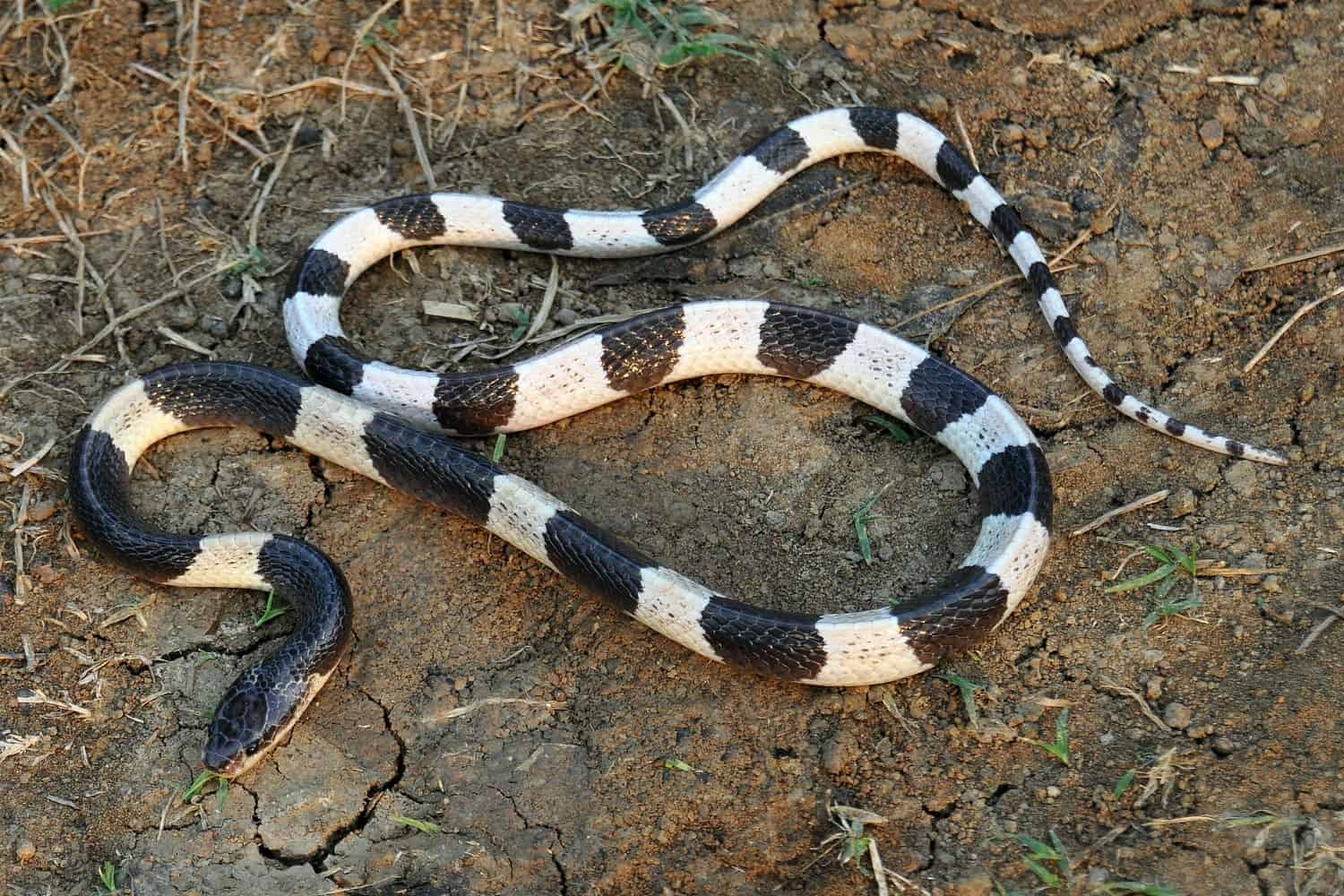
The bite from this snake usually ends up in death when untreated. According to doctors, 50% of the Blue Krait’s bite is still lethal even with the application of anti-venom. Their venom can forcefully shut down a human’s nervous system, causing coma and suffocation, due to paralysis of the muscles and nerves. It is quite an ugly way to go, don’t you think? Moreover, these snakes prefer to live in rocky areas, waterways, and rice fields, so it would be wise to always be aware of your surroundings just to be safe.
These snakes lay eggs in places that they have invaded and taken over, such as rat holes in the ground for their nests. People in Thailand have observed that males would engage in ritual fighting to attract mates. Meanwhile, their female counterparts would lay 4 to 10 eggs around March and April.
Boomslang
Scientific name: Dispholidus typus
Length: 1 – 2 meters
Location: Sub-Saharan Africa

The Boomslang displays non-aggressive characteristics. Their venom is primarily a hemotoxin that causes hemorrhaging into tissues such as muscle and the brain. Meanwhile, they are not nocturnal and are active during the day. These snakes often stay in trees and shrubs but would go down on the ground to bask in the sunlight or go hunting.
Although people would call them tree snakes in African, they also inhabit grasslands, savannahs, and open areas with isolated trees and bushes good for hiding from predators. They have exceptional eyesight, with the coloration ranging from green to brown or grey. The population of Boomslang in the wild is stable and healthy, so they are not on the list of endangered species.
Mojave Rattlesnake
Scientific name: Crotalus scutalatus
Length: 50 centimeters – 2.5 meters
Location: Desert areas of the southwestern United States and central Mexico
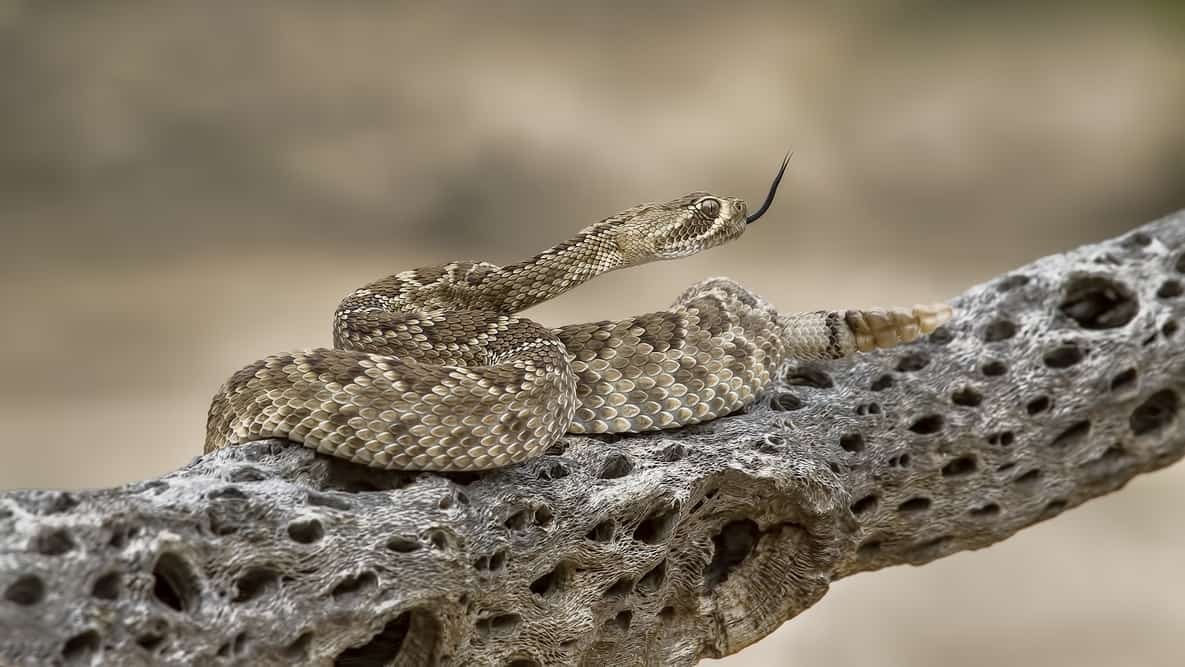
It has one of the most potent rattlesnake venoms, and together with its aggressiveness and a tendency to chase people, makes them extremely dangerous. When feeling threatened, they would shake their tail to produce a buzzing sound sending warnings to their intruder before striking for a bite. Envenomation from this snake can kill a person within 10 minutes from respiratory cessation. Luckily, people can acquire treatment with antivenom.
Don’t be surprised to find diamonds on the backs of the Mojave Rattlesnakes. This is also one of the reasons why people often mistake them for the Western Diamondback Rattlesnake. They are active at night, and would hide under crevices or bushes when the heat is unbearable.
Stiletto Snake
Scientific name: Atractaspis bibronii
Length: 40 – 60 centimeters
Location: Africa and the Middle East
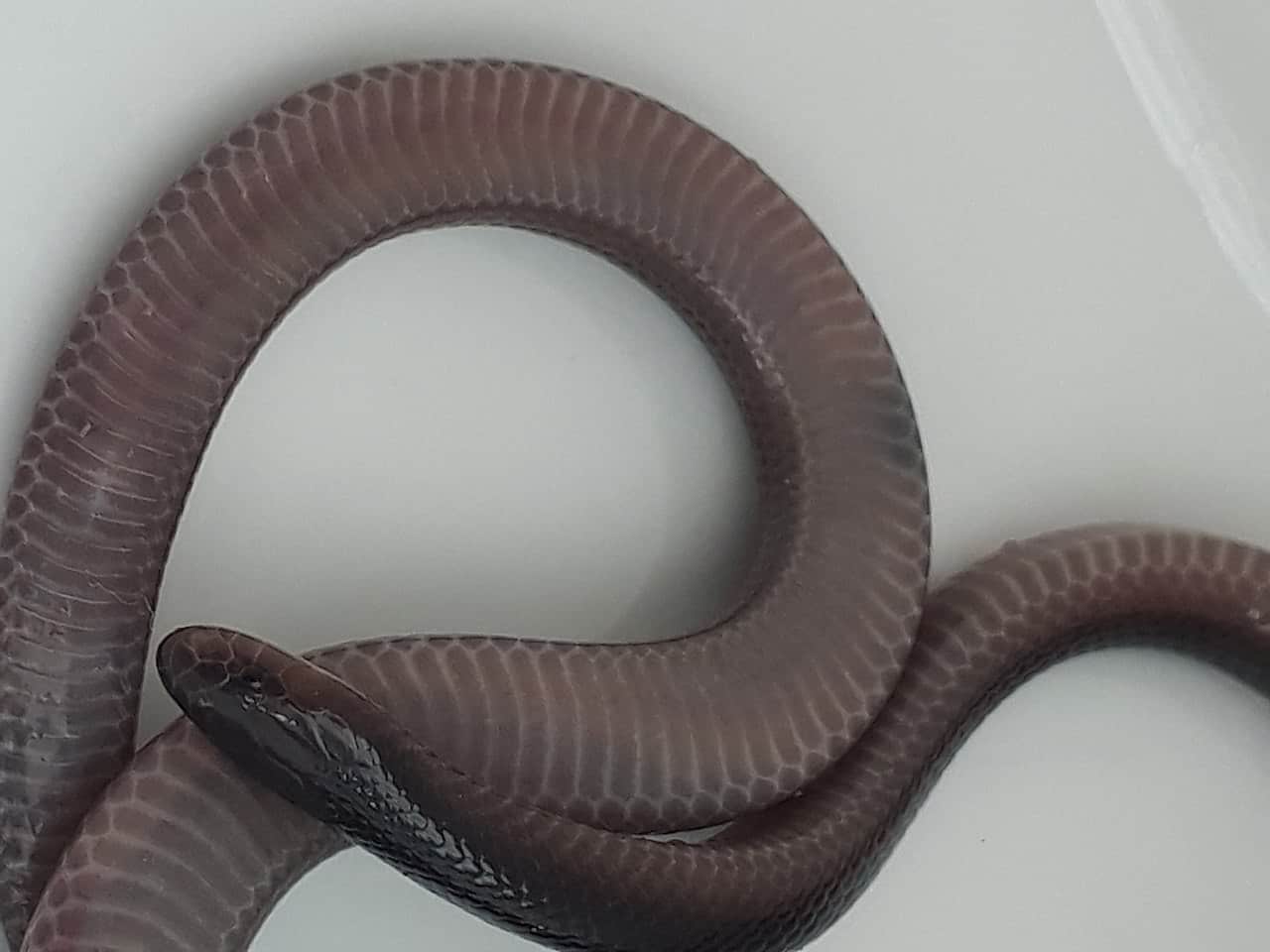
People have often mistaken this snake as harmless, and they would pick it up, not knowing that their long and shallow fangs can inject a venom that would attack cells, causing extreme pain, swelling, blistering, or tissue damage. Most doctors can only relieve the pain of the patient since there is no known antivenom for it yet. It is expected that the bitten part would suffer from tissue necrosis that would lead to amputation.
The Stiletto Snake lives underground most of the time and hunts for other snakes and lizards. It is active in the evening and would emerge out from its hideout especially after it rained. These snakes also have a unique stubby tail with a spike at the end. When threatened, they could scare predators by thrashing around or biting sideways when picked up.
Saw-Scaled Viper
Scientific name: Echis carinatus
Length: 30 – 90 centimeters
Location: Dry regions of Africa, Middle East, India, Sri Lanka, and Pakistan.
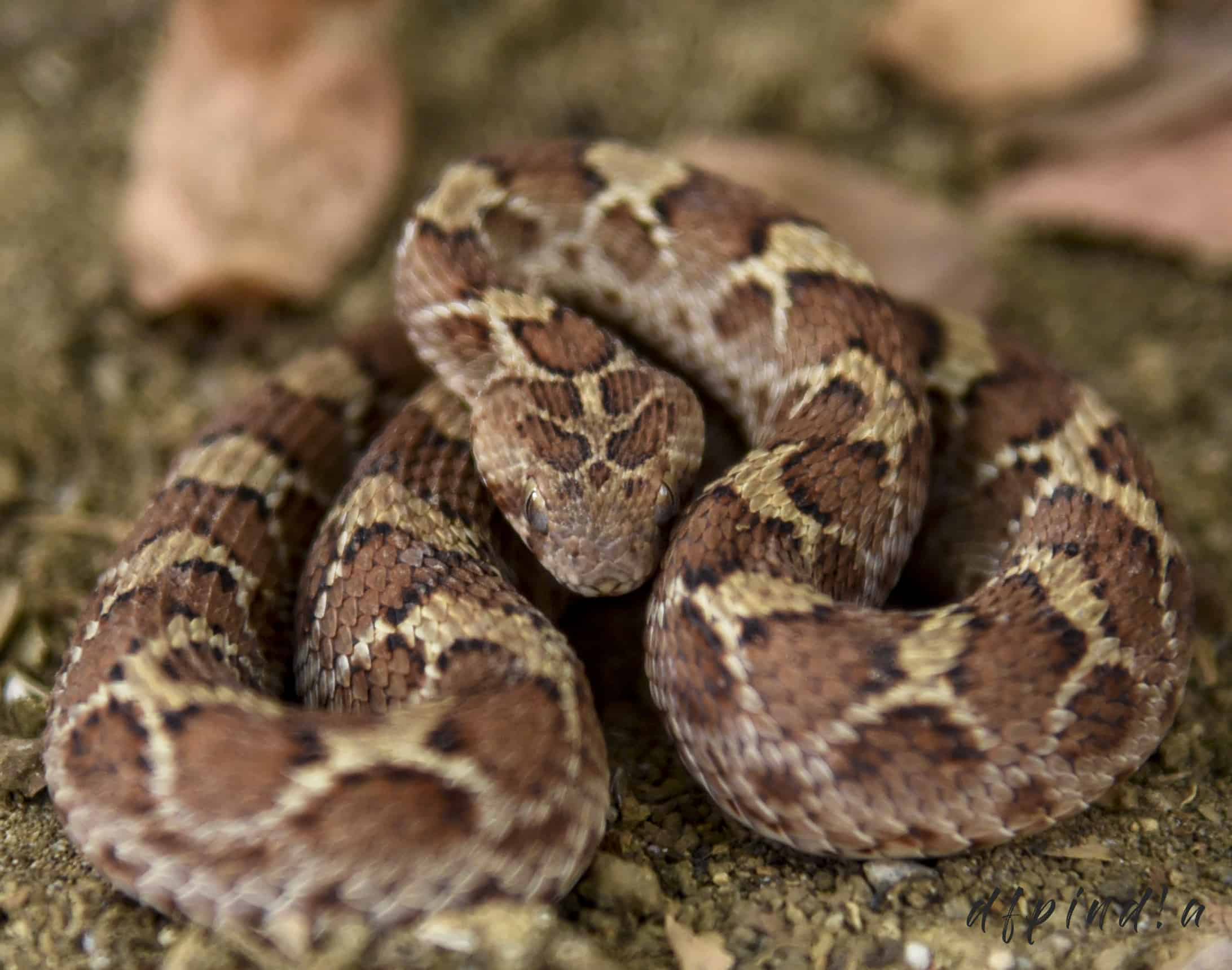
Unlike their other vipers, they are naturally aggressive and would often strike to bite when threatened. Saw-Scaled Vipers primarily display S-shaped coils, enabling them to create a sizzling sound from rubbing their scales together, accompanied by their loud hissing which gives a warning to their aggressors. They are said to be responsible for the high mortality rate in the regions where they thrive. They may be small, but they are quite highly lethal.
Blood-clotting and internal bleeding are the most dangerous symptoms a person could get from being bitten by this snake. These symptoms would lead to hypovolemic shock and acute kidney failure. Antivenom therapy and intravenous hydration are vital for a patient’s survival. Despite its lethality, the blood-thinning property of this venom is also used for several drug production.
King Cobra
Scientific name: Ophiophagus hannah
Length: 3 – 5.4 meters
Location: Southern and East Asia
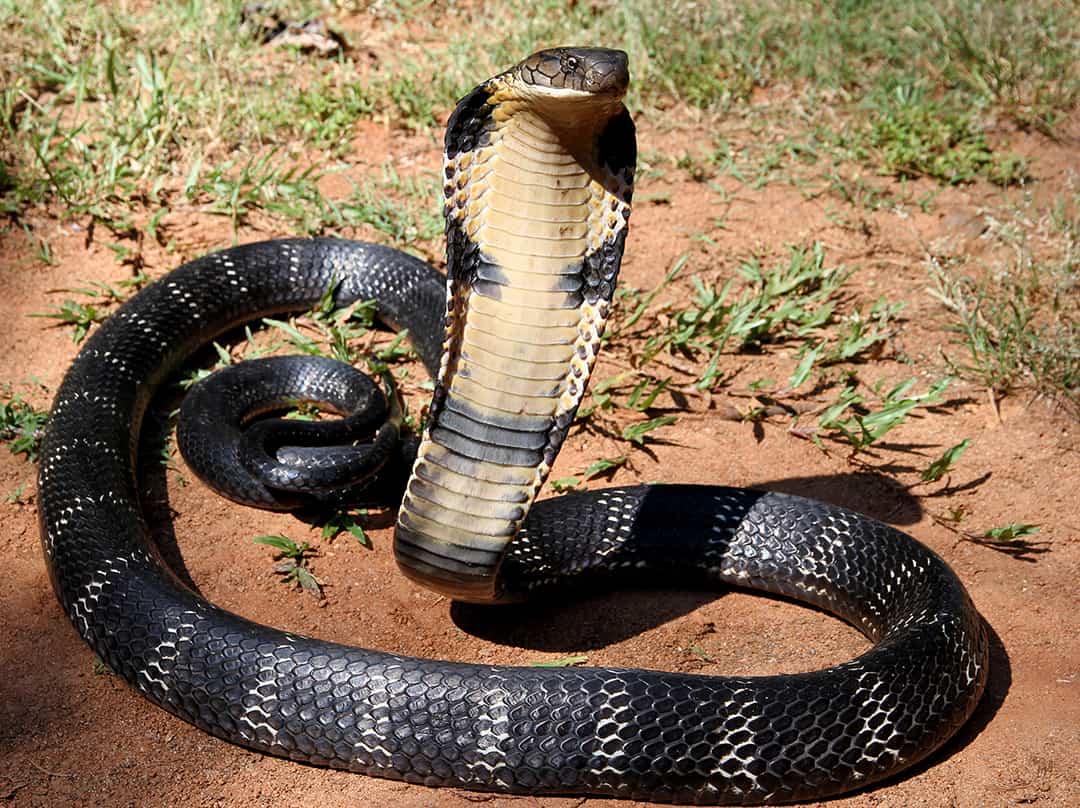
Named as the king of all cobras, this venomous and large cobra preys on other cobras, mammals, reptiles, and birds. Although its venom is not the most potent of all the venomous snakes, a single bite is enough to deliver neurotoxins that can kill 20 people, causing respiratory arrest and cardiac failure. However, getting a bite from a King Cobra would not be fatal if you do the necessary steps, such as wrapping the bite site and the entire limb with whatever is available to prevent the venom from going far, and immediately seeking treatment.
King Cobras live mainly in rainforests, bamboo thickets, mangrove swamps, high-altitude grasslands, and rivers. They are the longest of all the venomous snakes in the world. People have often mistaken their hoods as literal hoods, but in fact, those are actually their ribs. As for their lifespan, they can live and continue to grow for up to 20 years.
Banded Krait
Scientific name: Bungarus fasciatus
Length: 2 meters
Location: Southeast Asia, and in southern China

People describe the Banded Krait as a large snake with alternate black and yellow crossbands, with a marked vertebral ridge made up of huge vertebral shields along its body. They prefer open areas near water and usually invade rat holes, ants, or termite mounds for shelter. People get bitten by this snake at night while they sleep on the floor.
The venom of a Banded Krait is not as toxic compared to the Blue Krait’s, but it is still very potent and mainly attacks the nervous system. They are known to have cannibalistic behavior, and their venom is lethal against other snakes. Since all Kraits are nocturnal, they are very docile in the morning and would be very active at nighttime to hunt for prey. According to the University of Adelaide Department of Toxicology, untreated bites from the Banded Krait have a mortality rate of up to 10%.
Common Death Adder
Scientific name: Acanthophis antarcticus
Length: 1 meter
Location: Australia
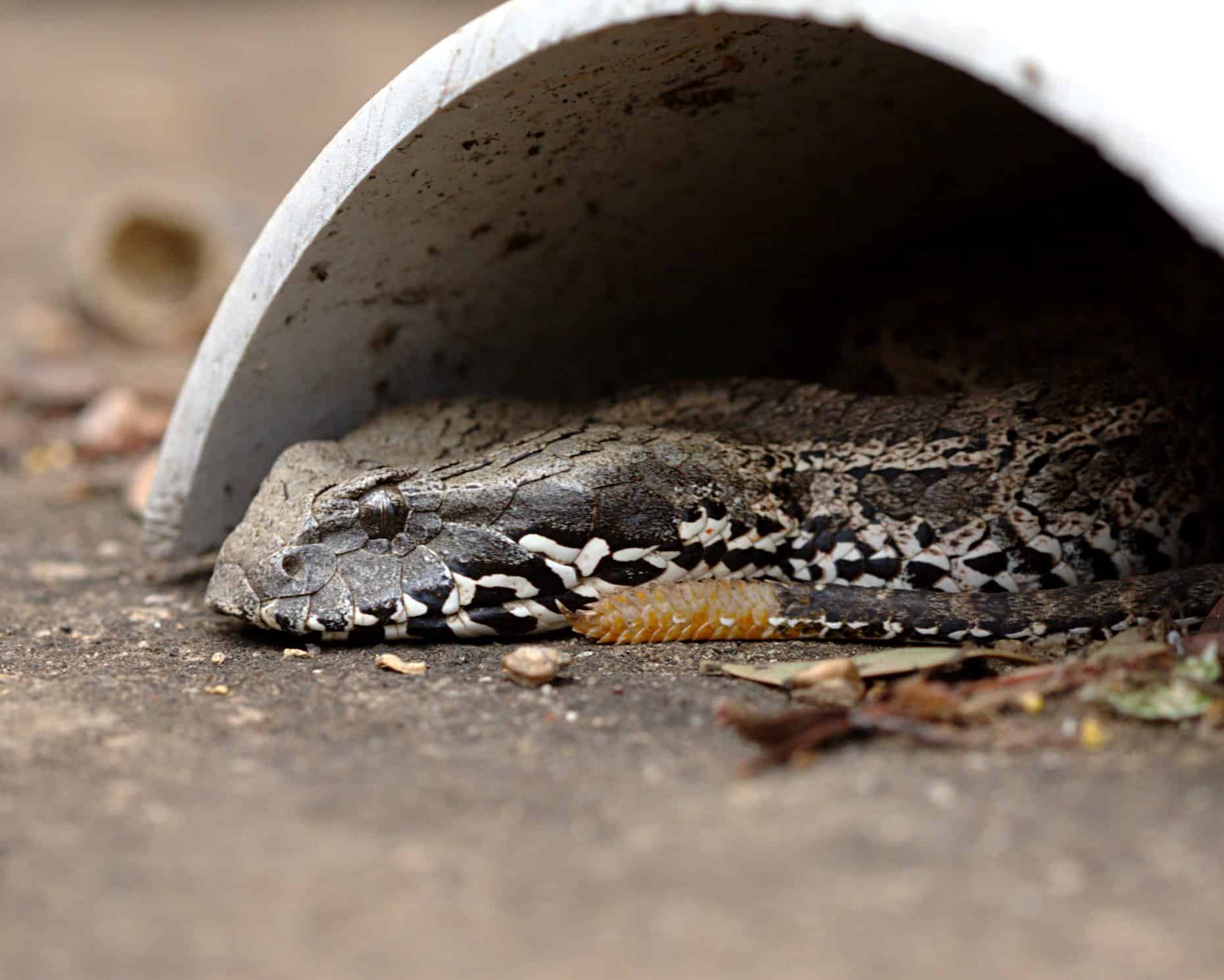
These snakes are short and stocky, and they have a resemblance to vipers, even though there are no vipers in Australia. Known to be the fastest striking snake in the world, Common Death Adders are ambush predators using their worm-like tails to lure prey like frogs, lizards, and smaller mammals. They usually bite without adding venom, but if they do, they would inject a large amount of neurotoxic venom which leads to paralysis, or death for at least 6 hours after the bite.
Common Death Adders are now considered endangered, rather than dangerous, thanks to the introduction of Cane Toads. These toads have toxins that are very deadly to Australian reptiles, including the Common Death Adders. Their numbers are plummeting since Death Adders’ tactics for luring prey attract Cane Toads more than their local and non-toxic counterparts.
Beaked Sea Snake
Scientific name: Enhydrina schistosa
Length: 1.2 meters
Location: Arabian Sea and Persian Gulf, south of the Seychelles and Madagascar, the seas off South Asia, Southeast Asia

They are active both day and night, spending most of their time underwater. A bite from this sea snake can cause paralysis, muscle damage, or death. They sometimes tangle themselves on nets while fishermen are unwary. The Beaked Sea Snake loves to prey on fishes, especially the wide-headed fish, unlike other sea snake snakes who would ignore it for a slender eel. Their long gape can accommodate the swallowing of a catfish’s large head, although they are also sometimes seen eating the tail first.
It is a common myth that sea snakes don’t need air to breathe. These are air-breathing reptiles, and they resurface from water once in a while to breathe some air. They have a cylindrical lung adapted for the exchange of air. The lung goes through their entire long body, which was developed through evolution.
Black Mamba
Scientific name: Dendroaspis polylepis
Length: 2.0 – 4.3 meters
Location: Sub-Saharan Africa
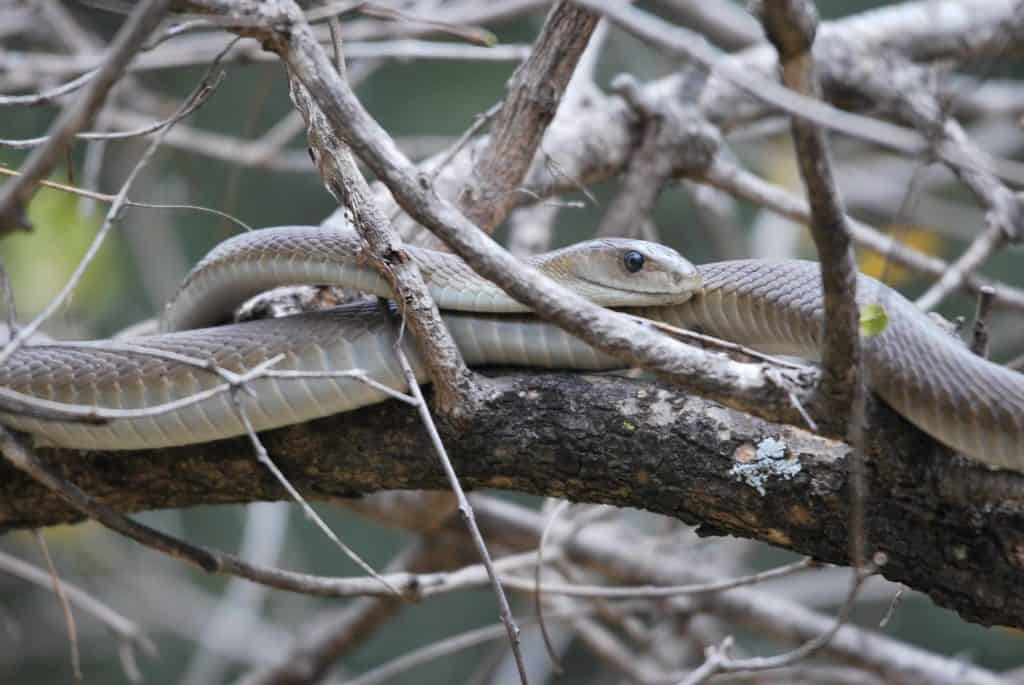
They are actually brown, as opposed to their given name. In terms of speed, Black Mambas are the fastest moving snake in the world. In fact, it can outrun a komodo dragon, which is already impressive for a creature without any limbs. They are diurnal, which means they are very active in the morning to hunt their prey. Moreover, a bite from these large cobras is known in Africa as the kiss of death. Their venom causes serious damage to the nervous system which will kill an adult human within 20 minutes. Although they don’t necessarily chase humans or attack them unprovoked, it would be best to stay away from them when spotting one.
Black Mambas are shy in nature, and they would always seek to escape than confront their foe. However, when feeling cornered, they would almost stand lifting a third of their body off the ground, spreading their hood and hiss. If left without an option, they would not hesitate to strike multiple times, injecting large amounts of potent toxins that would stop brain and heart functions.
Chinese Copperhead
Scientific name: Deinagkistrodon acutus
Length: 1 – 1.57 meters
Location: Southern China, Taiwan, northern Vietnam, and possibly Laos
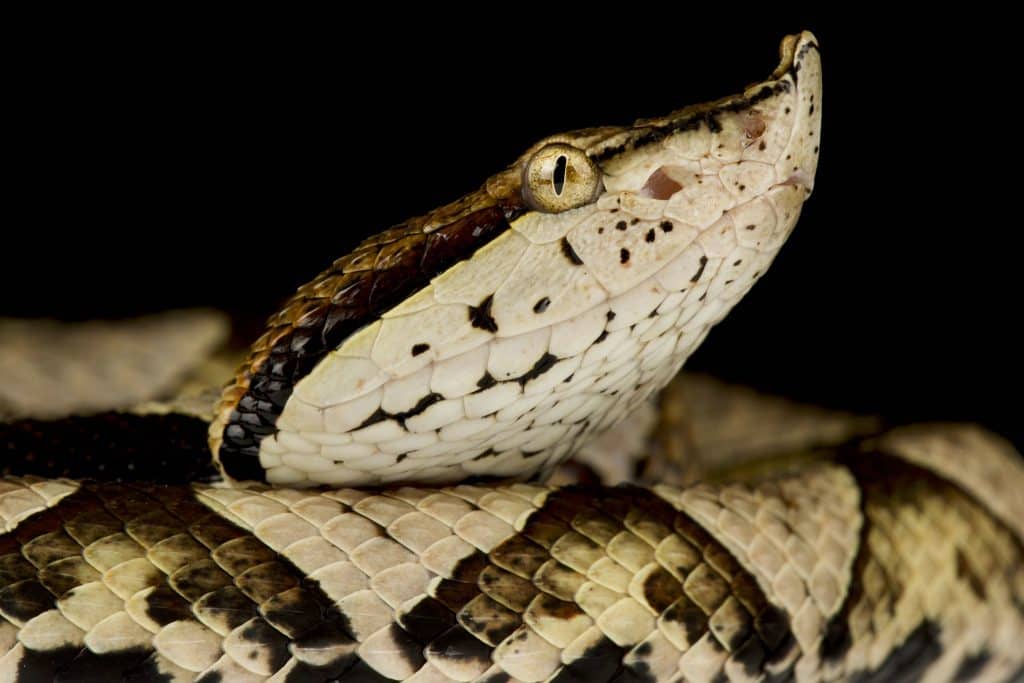
The Chinese Copperhead is a snake that has an infamous reputation to kill its victim after taking 50 to 100 steps. However, doctors would claim that it has been exaggerated too much by the locals where these snakes are present. This fear has caused bitten individuals to get amputated or burn their bitten limbs to prevent further complications. However, it is still a dangerous snake with fatalities occurring from its bites.
Moreover, its venom is commonly used for research to fight cancer cells. The Chinese Copperhead is also essential in Chinese traditional medicine for arthritis, leprosy, tetanus, boils, and tumors. It is actually ironic how venom is being utilized to become a substance that could help save the lives of people in the future.
South American Bushmaster
Scientific name: Lachesis muta
Length: 1.8 – 3 meters
Location: In the scrublands and forests from the Amazon River basin north to Costa Rica
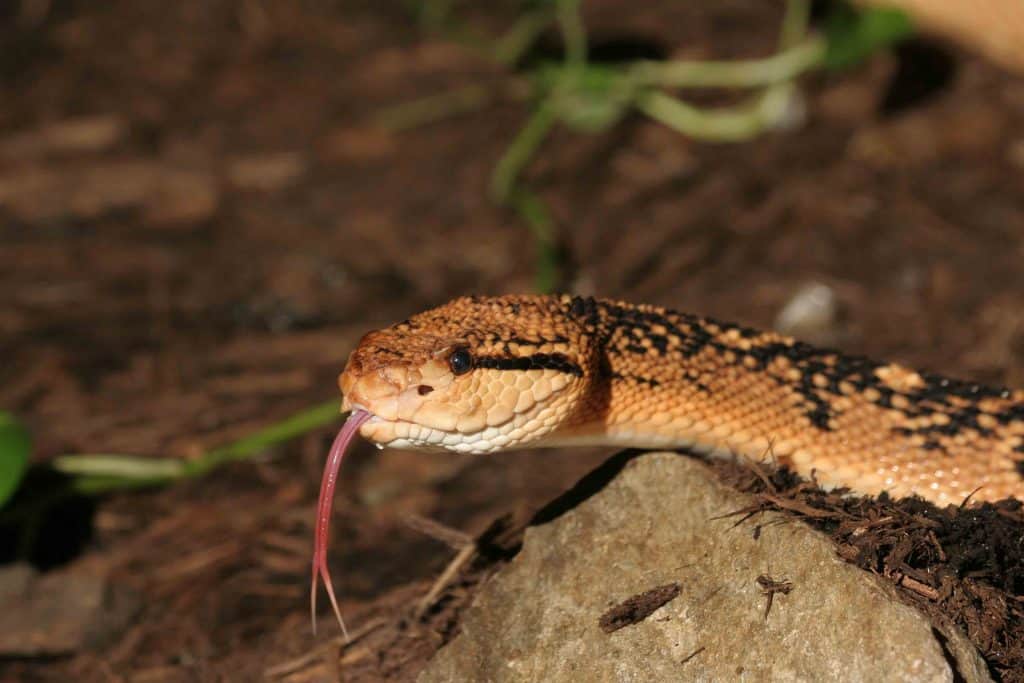
The South American Bushmaster can topple anything that crosses its path. As one of the deadliest snakes in the world, its reputation bears a high mortality rate even with proper treatment. As a tribute to its lethal power, their scientific genus name, Lachesis, refers to one of the three fates from Greek mythology who assigns a person’s lifespan. However deadly it may be, these snakes are usually shy and secretive. They would generally choose to avoid confrontation and run away.
Armed with heat-sensing pits located near its nose, the bushmaster is a master of hunting at night. They are solitary ambush predators, and would position themselves along trails for a long time until a prey would eventually fall from its own unawareness. When alarmed, they would vibrate their tail like a rattlesnake.
Fer-De-Lance
Scientific name: Bothrops asper
Length: 3 meters
Location: Ecuador to Venezuela in the northwestern coast of South America, Trinidad and north into Mexico
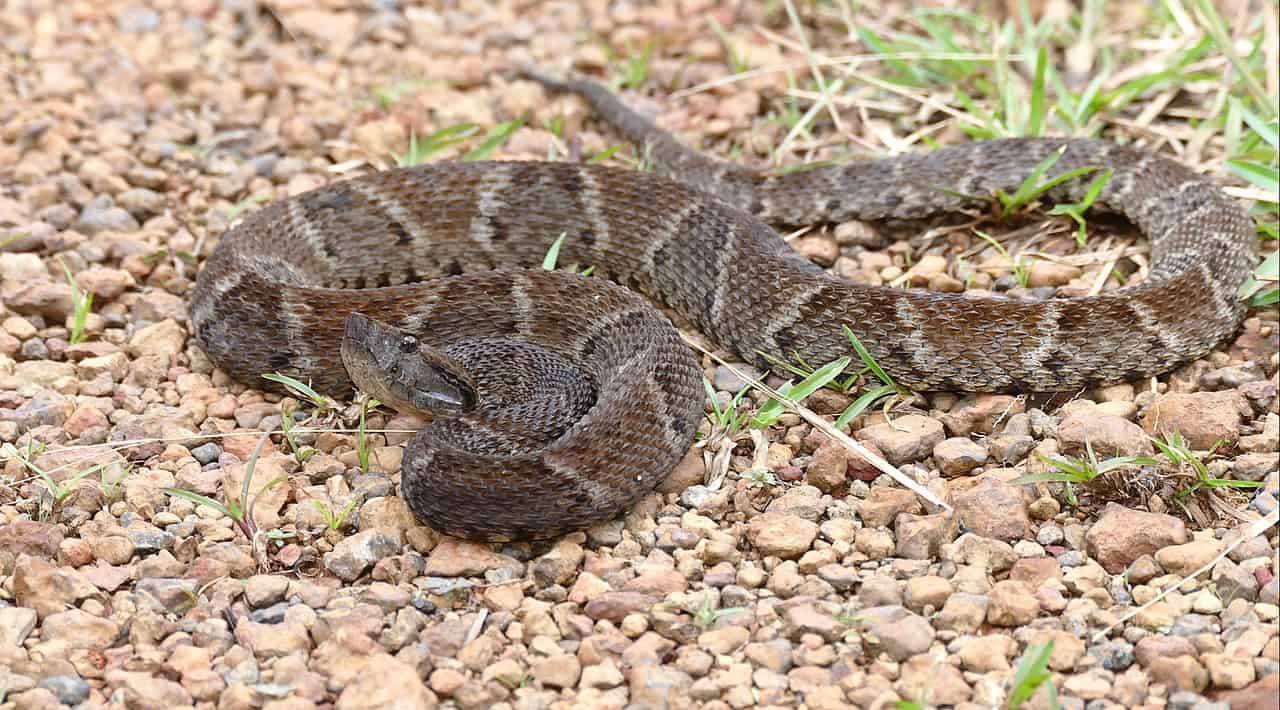
Fer-De-Lance snakes are pit vipers that are armed with a venom extremely fatal to humans. It can cause the death of body tissue, or muscle damage. It’s no wonder that even the locals generally fear them. Unfortunately, they are attracted to farmlands to seek out food. Encounters with Fer-De-Lance often end up as a terrible experience.
It is the most dangerous snake in Central and South America. This species has caused more human deaths than any other American reptile. The venom causes extremely quick hemorrhaging. Since it is a nocturnal reptile, it’s hard to spot one in the morning because it stays in its nest and would go out late in the afternoon.
Belcher’s Sea Snake
Scientific name: Hydrophis belcheri
Length: 50 centimeters – 1 meter
Location: Vietnam, Thailand, New Guinea, and the Philippines

Whether or not this sea snake should be listed as the most venomous snake in the ocean, one thing is for sure: its venom toxicity is extremely effective in catching fish. They may be built small, but they can cope up with their toxicity. However, they are not a significant threat to humans, and bites from them are extremely rare. Belcher’s Sea Snakes are not very aggressive and would usually do a dry bite to its aggressor.
Its venom is extremely toxic, capable of killing a human being within thirty minutes. Studies have shown that its venom is probably a hundred times more toxic than that of the Inland Taipan Snake’s. However, there is still a lack of concrete evidence to confirm these claims.
Blue Malayan Coral Snake
Scientific name: Calliophis bivirgatus
Length: 2 meters
Location: Brunei, Indonesia, Malaysia, Singapore, and Thailand

The Malayan Blue Coral is a beautiful snake. It has a red head and a black body covered with electric blue stripes, and a red tail. Extending over 1 ft long, this snake has the largest venom gland among the other snakes. Its unique type of venom is called calliotoxin, which affects the prey’s sodium channels.
Although they don’t come into contact with humans often, their venom can cause severe muscle spasm in its victim’s body, which may seem too excessive for hunting humans. However, this is their natural predatory move as they hunt other venomous snakes like the King Cobras. Unfortunately, there is no known antidote for the Blue Malayan Coral snake venom.
Blue coral snakes are nocturnal, and they usually spend most of their time hiding in the leaf litter on the forest floor by itself. If disturbed, they typically flee, but they may leave their red tail as a defensive act.
Was this page helpful?
Our commitment to delivering trustworthy and engaging content is at the heart of what we do. Each fact on our site is contributed by real users like you, bringing a wealth of diverse insights and information. To ensure the highest standards of accuracy and reliability, our dedicated editors meticulously review each submission. This process guarantees that the facts we share are not only fascinating but also credible. Trust in our commitment to quality and authenticity as you explore and learn with us.


